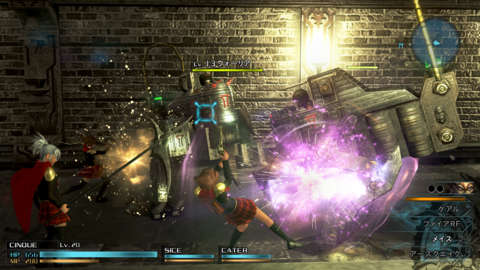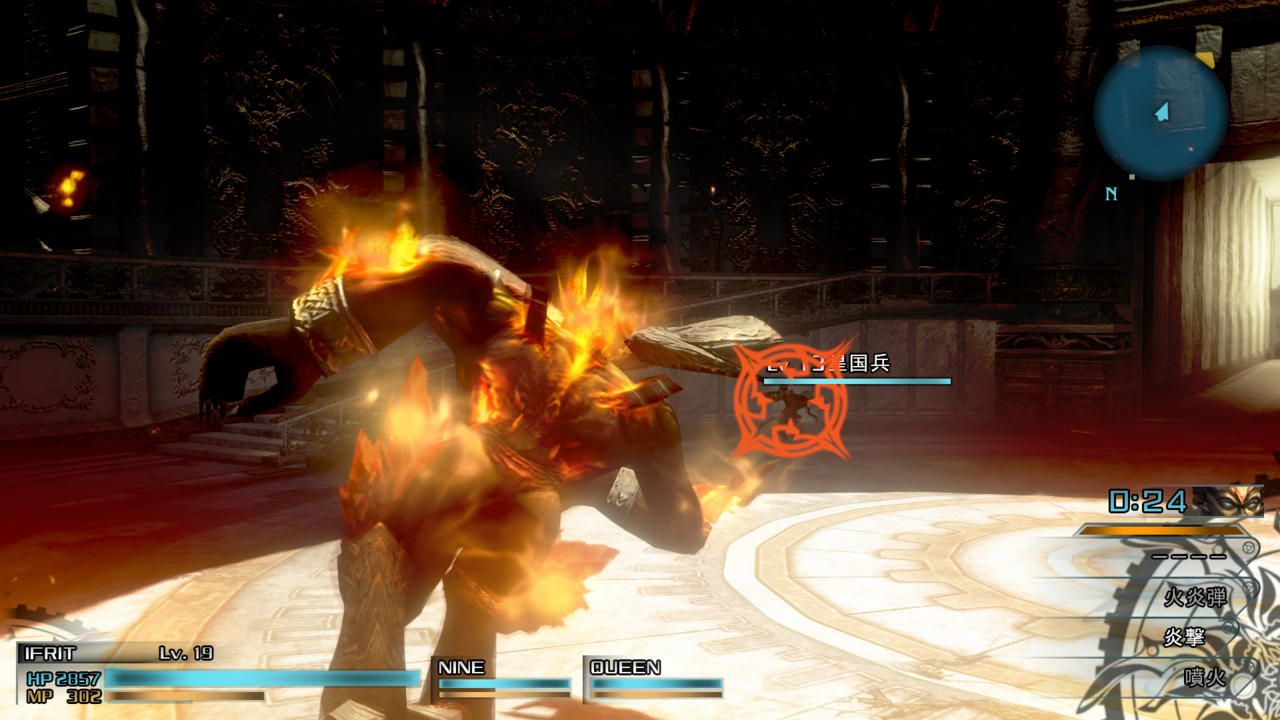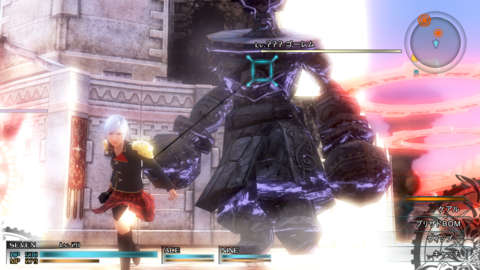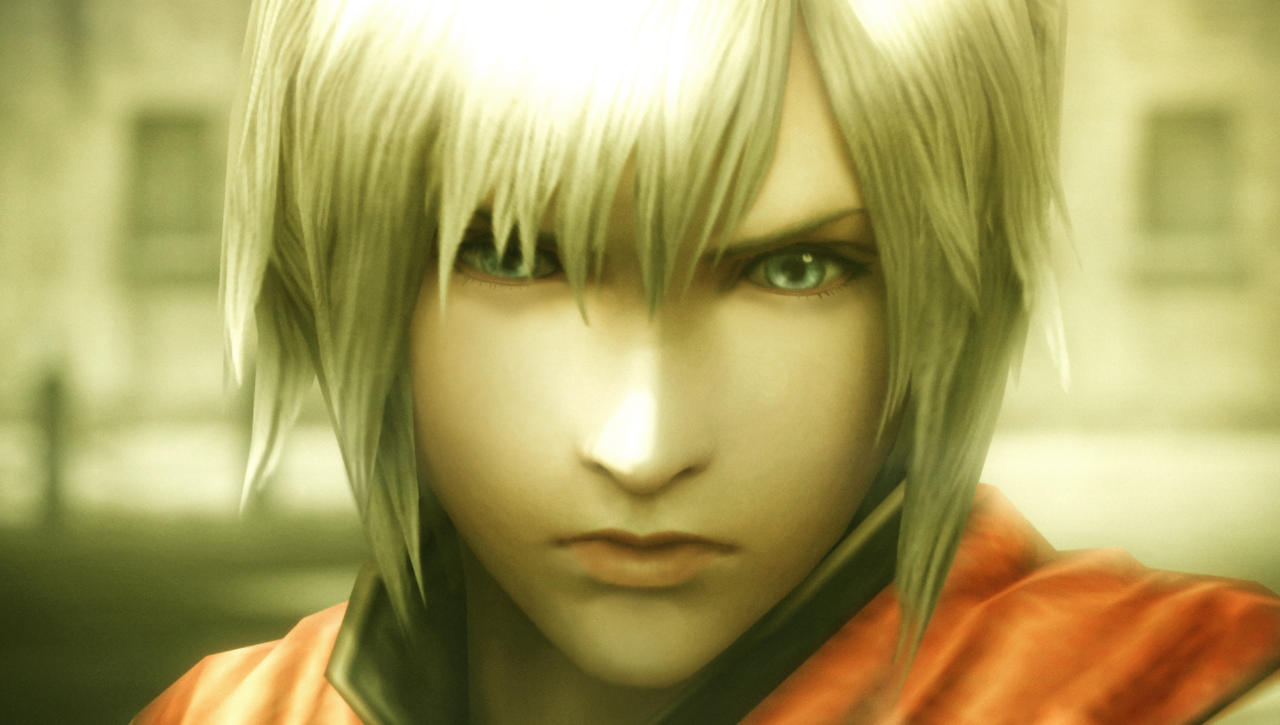Final Fantasy Type-0 begins with a dying Chocobo.
As someone who has been with the beloved Final Fantasy franchise since its beginning, and as someone who has spent an inordinate amount of time breeding Chocobos in various titles, this was devastating. I have never seen a Chocobo with a spec of blood on it, let alone one dying, so it’s confronting that director Hajime Tabata has chosen to open Type-0 with this jarring image.
Final Fantasy Type-0 launched for PlayStation Portable in Japan in 2011. The HD version is slated to hit PlayStation 4 and Xbox One on March 17. It’s not a numbered entry in the mainline Final Fantasy series, which means that as a spin-off it’s allowed to take some liberties and risks. In this case, making a Chocobo a very graphic casualty of war.
You tend to remember the opening sequence of a Final Fantasy game. Sin descending on Zanarkand in Final Fantasy X. The march of the Magitek armor in Final Fantasy VI. Final Fantasy VII’s bombing mission. You remember these games’ opening acts. And of all of them, Final Fantasy Type-0’s is the most heart wrenching.
Minecraft – Kung Fu Panda DLC Trailer Sclash - Console Release Date Trailer Kingdom Come: Deliverance 2 - Official Cinematic Announcement Trailer Stellar Blade - BIBI ‘Eve’ Official Music Video Trailer | PS5 Apex Legends: Urban Assault Collection Event Trailer Total War: WARHAMMER III - Elspeth von Draken Gameplay Showcase Potionomics: Masterwork Edition - Official Announcement Trailer Genshin Impact - "Arlecchino: Sleep in Peace" | Official Character Teaser Snowbreak: Containment Zone - "Gradient of Souls" Version Trailer Harold Halibut GameSpot Video Review Nancy Drew: Mystery of the Seven Keys | World Premiere Official Trailer Modern Warfare III & Warzone - Official Cheech & Chong Bundle Gameplay Trailer
Please enter your date of birth to view this video
By clicking 'enter', you agree to GameSpot's
Terms of Use and Privacy Policy
The first 10 minutes of Final Fantasy Type-0 are a bloodbath, and it doesn’t stop there. The game continues to be a red-splattered mess. Enemies explode into sparkles of blood when you absorb their power after they die. Bosses seem to bleed out once they’ve been defeated. In one instance, I found a magic-wielding woman inside a giant mechanical exoskeleton that looked like a scorpion. Once I ripped her metal exterior to shreds, it began to twitch and leak a thick syrupy something that could have been engine oil or blood. I couldn’t tell. But it was gruesome to watch the life drain out of her, drain out of my enemies, all at my hands.
Before these 10 minutes are up, someone cries, "I don’t want to die."
"We really wanted to explore a new direction with Type-0," Tabata said. "We wanted to showcase that this is a very different Final Fantasy within those first 10 minutes of the game. And throughout Type-0, life is a key element. At the very beginning I wanted to depict the seriousness of what life means and the weight it carries.
"In showcasing that bloody Chocobo, it wasn’t that I wanted to show bloody scenes for the sake of bloody scenes. I wanted to dig deeper into the characters' personalities and showcase that weight of life. I felt this scene was necessary to do this, and that’s why it’s there."
"At the very beginning I wanted to depict the seriousness of what life means and the weight it carries."
Final Fantasy Type-0 is a game that vividly depicts the brutality of war. It’s still set in a magical fantasy setting with Hi-Potions and Moogles and summons, but the way it handles the way human lives are treated in war is close to our reality.
Tabata calls back to his time working on Crisis Core: Final Fantasy VII, building a game shown through the eyes of Zack Fair, Cloud’s doomed companion. Players start the game knowing Zack will be dead by its end, and Tabata wanted to convey both the beauty and sorrow of his sacrifice. But there was a time when Crisis Core was also a bit too "cleaned up" for Tabata’s taste. Nothing takes the sting out of watching a bloody battle than removing all the blood.

"In the end of Crisis Core, you see Zack Fair bleeding. There’s blood on his face and ears. In the beginning, however, there was no blood on him, and it looked too pretty. It didn’t click," Tabata said. "It ruined the moment. After further discussions with [fellow Square Enix director Tetsuya] Nomura we tried a different approach with that scene, and at the very end when you see Zack’s blood dripping on Cloud, that’s when the realism kicked in.
"In Type-0, life is such an important theme, I felt that the way we depicted it in those initial scenes is very important," he added. "We wanted to show life as something with value."
Combat in Type-0 is an upgraded version of that in Crisis Core. "An extreme version," according to Tabata. The system has been refined into a fast-paced affair, necessitating quick attacks and dodges. You lock onto an enemy and attack with either a weapon or a magic spell. The longer you charge your magic spell, the most powerful it will be, but your magic points are a finite resource on the battlefield until you start knocking down some enemies. Enemies that fall allow you to absorb some magic points back, granting you the energy to continue attacking. Things move quickly and there is very little downtime during missions.
So little downtime, in fact, that hitting the options menu to grab a potion doesn’t stop the action. If you don’t immediately select the pause option, your game will continue to run, and your party will likely be annihilated. According to Tabata this is a carryover from the PSP version’s ad-hoc multiplayer, in which one player could continue forward if the other entered the menu screen. This method also discourages you from loitering in the menu during battles. Grab the item you need, heal up, and back out of there as soon as you can. I learned this very quickly when I went to peruse my inventory during a boss battle and promptly died.

"It is true that the Type-0 combat system is an upgraded version of the Crisis Core combat system," Tabata explained, noting that the biggest change is the number of playable characters, from one to 14. "In terms of it being extreme, the system is refined significantly. You can swap characters out at any time and adapt to any kind of combat situation."
Enemies are also acutely aware of your movements on the battlefield. You can stand still with your weapon sheathed to rapidly regenerate health, but if you stand still your enemies will close the distance between you. If you dodge, they’ll turn to follow you. If you get up close and personal, they’ll take the opportunity to take out your kneecaps. The enemy AI reacts intelligently to the way you move, making the act of simply clearing areas a weighty challenge.
Additionally, you can send any combination of three characters out of 14 into battle. The game features an ensemble cast, a la Final Fantasy VI and IX, allowing you to pick between two dozen fighters with different weapons and combat styles. The game encourages balanced use of all characters by offering the eleven fighters not on the battlefield as backup combatants should your party members die.


Death in Type-0 is not the annoying inconvenience it has been in previous Final Fantasies, where you could throw out a Phoenix Down and bring any party member back. Instead, it's a tragedy, because in Type-0, there are no Phoenix Downs. Death within a mission means that character is unavailable for the rest of the mission.
Switching between characters is quick and satisfying. You can seamlessly swap between Sice and Ace, moving from close-range attacking a soldier with your scythe to flinging your magic cards out over a bridge to take down a flying drone. Final Fantasy XIII’s real-time battle system was fluid, but Type-0’s is just breezy. There is no downtime, no lengthy recovery between attacks and switching characters. Just make sure you have enough MP, and you’re good to go.
Building an ensemble cast is a challenge in terms of crafting a pile of varied personalities. Tabata chose to demonstrate the personalities of the heroes in Class-0 with wildly varied fighting styles. One little girl wields a mace, another a scythe, another an extendable chain. The leader of the group fights with cards. One guys uses guns, another with a bow and arrow. They are reserved, chatty, stern, perky, optimistic, and cocksure in turns, a spread as full and different as the deck of cards they borrow their names from.
"The biggest challenge was to ensure that players would feel each of these characters lead very valuable lives," Tabata said. "The second was making sure that each of these characters had their own personality and distinct nature. In order to communicate that from a gameplay standpoint, we allocated each of them unique combat styles. From a story standpoint, we showcase different events through the eyes of different characters and the perspectives they hold, and made one drama, one storyline out of that. It wasn’t an easy feat. Just working with one character, Zack, was way easier."
"The biggest challenge was to ensure that players would feel each of these characters lead very valuable lives."
Type-0 isn’t just about these characters’ histories; it’s about the world of Orencia’s history. The heroes are only small cogs in a grander world, and the game makes sure at every turn that you remember this. Tabata said that he was inspired by the idea of the Puritans coming to America, founding a country and opening it up new people and new experiences. The idea of collecting and building upon history is a notion that fascinates Tabata, and it’s one he has striven to convey in Type-0. This is the reason behind the blood and death.
"As in human history, it’s the accumulation of life and how each individual in history has lived," he said. "If we’re shedding light on that aspect of it, then that’s a meaningful form of depiction."

Walking away from my two-hour demo, I was a little dazed, but excited. Type-0 is unlike any other Final Fantasy game to date. It’s brutal, bloody, and significantly more challenging than its predecessors. There are no Phoenix Downs for quick revivals. There is no conspicuous absence of blood. This war isn’t like the churning of nameless soldier-drones in Final Fantasy XIII or the endless chopping down of creatures and otherworldly spirits in Final Fantasy XII. This isn’t like any other Final Fantasy game. It’s war, painted in the same bright colors of the war banners in our own world.
It’ll take you about 40 hours to finish Final Fantasy Type-0's main story and delve into its history, a bigger commitment than Tabata’s Crisis Core. Tabata has come a long way since then, but he hopes he’s been able to create another experience in which players connect with and love the characters they play as.
"You’re one with the characters and living through the battle with the characters," Tabata said.

